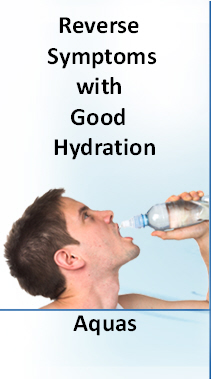This clip of my interview with Nancy Tingey was recorded in 2012. Her website is: paintingwithparkinsons.org.au
Living with Parkinson’s disease presents numerous challenges, from physical limitations to emotional hurdles. However, amidst these difficulties, individuals find solace, expression, and even liberation through various forms of art. One such avenue is painting—a medium that not only allows individuals to express themselves but also provides therapeutic benefits that can be particularly beneficial for those with Parkinson’s.
The Canvas of Challenges
Parlinson’s symptoms such as tremors, stiffness, and impaired balance can make daily activities, including tasks as seemingly simple as holding a paintbrush, challenging. Moreover, the emotional toll of living with a chronic illness adds another layer of complexity.
Painting with Parkinson’s as Therapy
Despite the obstacles, painting offers a sanctuary of creativity and self-expression. Art therapy has long been recognized for its ability to improve motor skills, reduce stress, and enhance emotional well-being. For individuals with Parkinson’s, painting can serve as a form of physical therapy, helping to maintain dexterity and coordination.
therapy has long been recognized for its ability to improve motor skills, reduce stress, and enhance emotional well-being. For individuals with Parkinson’s, painting can serve as a form of physical therapy, helping to maintain dexterity and coordination.
Embracing Imperfection
One of the most beautiful aspects of art is its capacity to transcend perfection. In the world of painting, imperfections are not flaws but rather unique expressions of the artist’s journey. This perspective can be especially empowering for individuals grappling with the changes that Parkinson’s brings to their bodies and abilities.
Finding Freedom in Creativity in Painting with Parkinson’s
Painting offers a sense of freedom—a space where individuals can transcend the confines of their condition and tap into their innermost thoughts and emotions. Whether it’s through bold strokes of color or subtle nuances of shading, each brushstroke becomes a testament to resilience and creativity.
Adaptive Techniques
Adapting painting techniques to accommodate the challenges of Parkinson’s is key to unlocking the full potential of artistic expression. Simple modifications such as using larger brushes or stabilizing devices can make a significant difference in the painting process, allowing individuals to focus more on their creativity and less on their limitations.
Community and Support
Engaging in painting with Parkinson’s doesn’t have to be a solitary pursuit. Joining painting classes or support groups tailored to individuals with movement disorders can foster a sense of community and belonging. Sharing experiences, techniques, and artworks with others who understand the unique challenges of Parkinson’s can be incredibly uplifting and inspiring.
Beyond the Canvas
The benefits of painting extend far beyond the finished artwork. The act of creating—immersing oneself in colors, textures, and forms—can be a meditative experience, offering moments of peace and tranquility amid the chaos of Parkinson’s symptoms. Moreover, the sense of accomplishment derived from completing a painting can boost confidence and self-esteem, counteracting feelings of helplessness and frustration.
Painting with Parkinson’s Conclusion
Painting with Parkinson’s is not about overcoming limitations but rather embracing them as part of the artistic journey. It’s about finding beauty in imperfection, strength in vulnerability, and joy in the act of creation. Through painting, individuals with Parkinson’s can discover a newfound sense of purpose, empowerment, and self-expression—a testament to the transformative power of art in the face of adversity.
Research about Painting with Parkinsons
Clin Neurol Neurosurg. 2022 May:216:107237. Increased creativity associated with dopamine agonist therapy: A case report and short review of the literature. Smathorn Thakolwiboon, Amputch Karukote, Parunyou Julayanont, Henrik Wilms
Abstract
Impulse control disorder (ICD) has been linked to dopamine agonist use in patients with Parkinson’s disease. Increased creativity is another cognitive side effect of dopaminergic therapy. While ICD is well recognized in the literature, enhanced creativity as a positive phenomenon is underreported because it does not negatively affect the patients’ quality of life.
Herein, we report a case of a 49-year-old man with Parkinson’s disease who developed enhanced creativity expressed by the acquisition of multiple, new artistic skills with ropinirole treatment. He spent a significant amount of time on painting, carving and axe restoration, selling these artistic products became a source of income. He also reports that these hobbies help him cope with physical limitations caused by Parkinson’s disease.
Robert Rodgers PhD
Founder 2004
Parkinsons Recovery
Road to Recovery from Parkinsons Disease
 Parkinson’s disease in 2008. Fred discusses his journey with this challenging health condition, his philosophy and approach to recovery and his ten step recovery protocol.
Parkinson’s disease in 2008. Fred discusses his journey with this challenging health condition, his philosophy and approach to recovery and his ten step recovery protocol.








